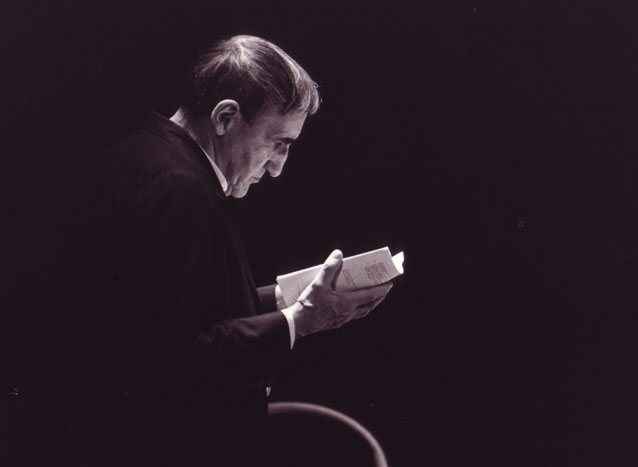|
|
|
TADEUSZ KANTOR

Theatre “searches for an ancestry deeply rooted in the past that emerges from ancient customs, ur-rituals, the practice of magic, festivities, ceremonial celebration, games, pageantry and processions, popular and street theatre, political and agit-prop theatre – it searches wherever art is no longer a consumer product but an integral component of life.“
Tadeusz Kantor
Tadeusz Kantor, born 1915 in Wielopole and died in December 1990 in Krakow, was a Polish painter, scene designer and theatre director.
Graduating from the Krakow Academy in 1939, Kantor founded the Independent Theatre during the Nazi occupation. He became a professor at Krakow’s Academy of Fine Arts and a director of experimental theatre in Krakow in the years 1942-1944. Following the war, he become known for his avant-garde work in stage design for various Polish theatres.
In 1955 Kantor and a group of visual artists formed his own theatre, Cricot 2, starting with The Cuttlefish, a play by the Polish writer/philosopher Stanislaw Ignacy Witkiewicz. In the late fifties, Kantor began to expose widely in other countries, e.g. in Paris, Göteborg, Kassel, Stockholm, New York, Venice.
In the 60s, Kantor traveled widely with his theatre becoming known for staging "happenings", passing from "Informal Theatre" to "Zero Theatre"with Witkiewicz' The Madman and the Nun (1963) and "Impossible Theatre". The Water Hen (1969), presented 1972 at Edinburgh, was described as "the least-publicised, most talked-about event at the festival". The same year he stages Witkiewicz' The Shoemakers in Paris.
The Dead Class (1975) maybe has become the most famous of Kantor's theatre pieces. After its preview at the Documenta Kassel, it was shown all over the world, winning many prizes like the OBIE in New York. Within the piece, Kantor himself took the role of a master of ceremonies, conducting his actors - seemly dead characters who are confronted by mannequins which represented their younger selves.
With the Dead Class, Kantor proposed a Theatre of Death in a theatrical tour de force, which explored the persistence of memory and its interplay with time and the construction of history. This interpenetration of life and death created powerful and disturbing images at once comic and absurd, joyous and terrifying. From such impact the legacy of Kantor and Cricot 2 still reverberates.
In 1983, the Centre Pompidou dedicated a grand retrospective to Kantor and Teatr Cricot 2. In 1985, Kantro staged the Italian-German coproduction Let the Artists Die, which was presented in Avignon, Milan, Paris and New York, where it won the O.B.I.E. award.
Kantor's Love and Death Machine, staged with Italian actors in Milan in 1987, was to become another mile stone in theatre history. Further, his works were I Shall Never Return (1988) and Today is My Birthday (1990).
|